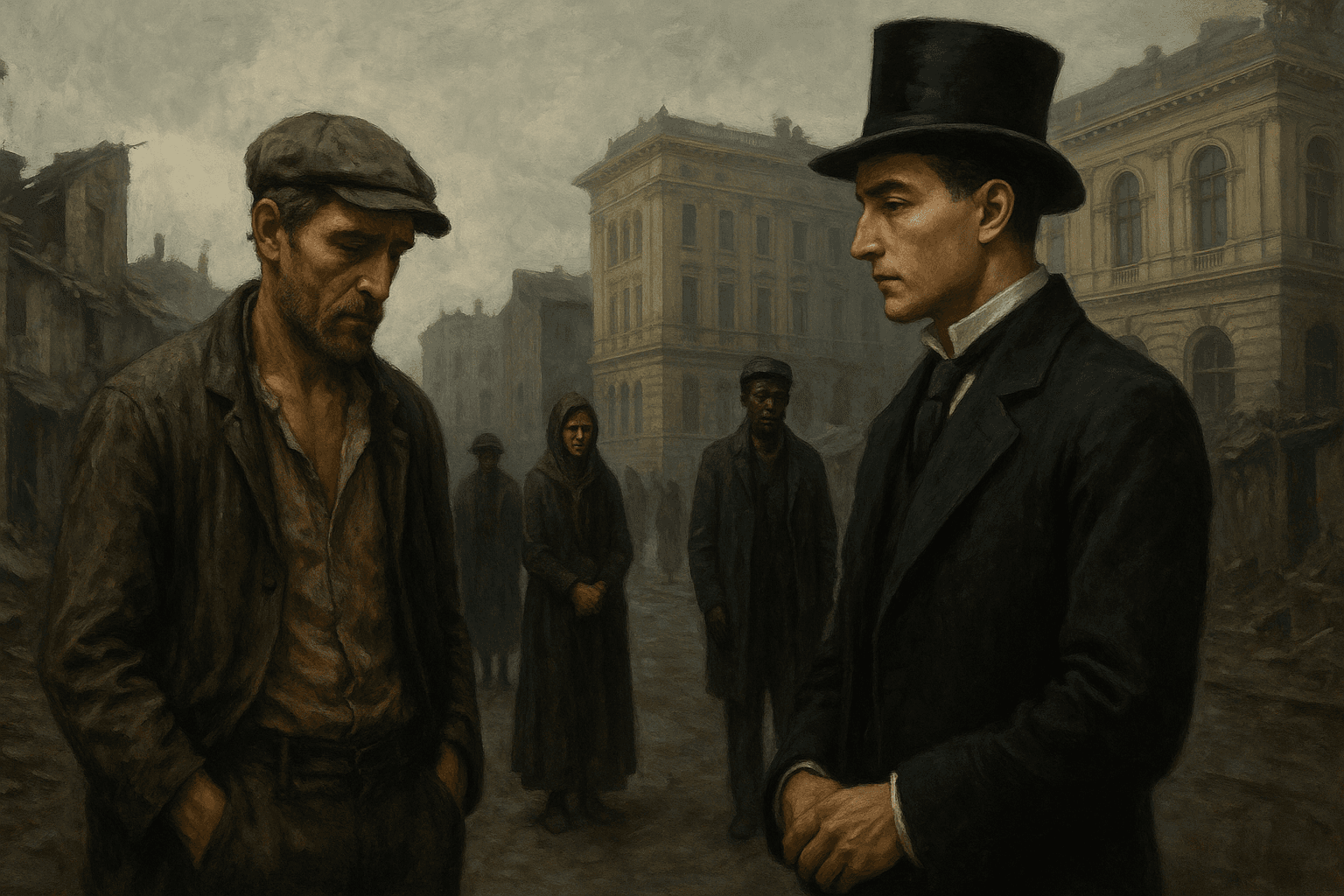Navigating the Tides of Social Class in Dostoevsky's The Brothers Karamazov

Dostoevsky's The Brothers Karamazov intricately explores the theme of social class and status, weaving it into the very fabric of its characters' lives. From the chaotic dynamics of the Karamazov family to the societal judgments that haunt them, the novel presents a vivid portrait of how class shapes identity, morality, and human relationships.
The narrative begins with Fyodor Pavlovitch Karamazov, whose rise from poverty to wealth highlights the often arbitrary nature of social status. Despite his lack of moral integrity, Fyodor's shrewd business acumen allows him to amass considerable wealth, illustrating the complexities of social mobility. His tumultuous marriage to Adelaïda Ivanovna not only showcases the tensions between social classes but also raises questions about the sacrifices made for status and the consequences of marrying across class lines. As we move deeper into the story, the neglect experienced by Mitya—abandoned by his father and left to the care of a servant—underscores the profound impact of upbringing on one's perception of self-worth and societal expectations.
The Karamazov brothers each navigate their own paths influenced by their social standing. Alyosha, the youngest, represents a longing for spiritual fulfillment and a rejection of material wealth. His choice to pursue a monastic life starkly contrasts with his father's moral depravity, showing that true worth transcends social status. Meanwhile, Ivan's intellectual aspirations and Dmitri's wild emotional outbursts highlight the struggles of individuals ensnared in the expectations tied to their class.
Amidst these personal conflicts, Dostoevsky critiques the superficiality of social hierarchies through settings like the monastery, where interactions reveal the tension between genuine spirituality and the trappings of social standing. Characters like Father Zossima embody moral authority that transcends wealth, suggesting that true power lies in compassion and connection rather than in societal acclaim. The juxtaposition of the privileged and the impoverished, as seen in the encounters between the Karamazovs and the Snegiryov family, illustrates the stark realities faced by those at the lower end of the social spectrum.
As the plot thickens with the murder trial of Dmitri Karamazov, the courtroom serves as a microcosm for societal dynamics, where perceptions of guilt are often intertwined with class biases. The prosecutor's arguments and the defense's counterpoints reveal how deeply ingrained social prejudices can shape the outcomes of justice—echoing the broader societal issues of moral decay and the influence of status.
Ultimately, The Brothers Karamazov presents a rich tapestry of characters navigating the turbulent waters of social class and status. The relationships formed and severed within the narrative expose the fragility of human connections, often dictated by the rigid structures of society. Dostoevsky challenges us to reflect on our own perceptions of worth, love, and moral responsibility, urging a deeper understanding of the complexities that lie beneath the surface of social hierarchies. In a world where status often dictates fate, the novel reminds us of the shared humanity that can transcend class divides, leaving us to ponder: can true redemption be found beyond the confines of societal expectations?
Books: The Brothers Karamazov
Authors: Fyodor Dostoyevsky
Publishers: Public Domain